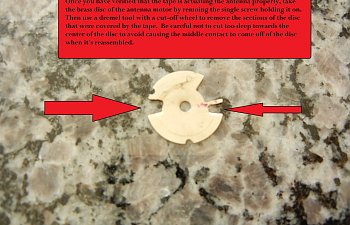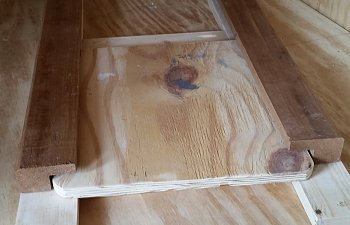I put together a little video showing how you can make an automatic chicken door with a power car antenna and a timer in hopes it inspires you to add one to your coop!
If you found the video helpful, please give it a "Thumbs Up" on Youtube.
Thanks for watching!
Here's a pictorial describing the process:

Start with a power car antenna







Attach the car antenna to the wall of your coop

Build a door guide




Mount the timer & battery then attach the wires.


Organize the wires

Now it's time to add the solar panel. Lets go!
Buy a solar panel and charge controller.

Attach a longer lead to the solar panel if needed. I used an outdoor extension cord which was easily soldered to the back of the panel.

Make some mounting brackets out of 1/8" thick aluminum available from your local home center.

Use some stainless steel nuts and bolts to attach the brackets to the panel

And to the attach the panel to the mount.

Attach mount to coop with u-bolts and route wire into coop.


Attach charger controller and connect wires. Make sure to connect the battery first, followed by the solar panel and then the antenna (load).



All you have to do is set the time on the timer and then enter the times that you'd like the door to open and close. I have been using this system for a few weeks now and have had no issues. The solar panel charges the battery even on cloudy days.
Here's a list of the parts I used:
Solar Panel: http://amzn.to/2wybora
Solar Charge Controller: http://amzn.to/2xbPrBM
Power Car Antenna: http://amzn.to/2ioEJmb
Solar Panel Mount: http://amzn.to/2fbTLeg
12V Timer: http://amzn.to/2g4yinl
12V Battery: http://amzn.to/2wlWkRm
Wire Connectors: http://amzn.to/2ipEp6M
Let me know what you think. Pros? Cons?
If you found the video helpful, please give it a "Thumbs Up" on Youtube.
Thanks for watching!
Here's a pictorial describing the process:
Start with a power car antenna
Attach the car antenna to the wall of your coop
Build a door guide
Mount the timer & battery then attach the wires.
Organize the wires
Now it's time to add the solar panel. Lets go!
Buy a solar panel and charge controller.
Attach a longer lead to the solar panel if needed. I used an outdoor extension cord which was easily soldered to the back of the panel.
Make some mounting brackets out of 1/8" thick aluminum available from your local home center.
Use some stainless steel nuts and bolts to attach the brackets to the panel
And to the attach the panel to the mount.
Attach mount to coop with u-bolts and route wire into coop.
Attach charger controller and connect wires. Make sure to connect the battery first, followed by the solar panel and then the antenna (load).
All you have to do is set the time on the timer and then enter the times that you'd like the door to open and close. I have been using this system for a few weeks now and have had no issues. The solar panel charges the battery even on cloudy days.
Here's a list of the parts I used:
Solar Panel: http://amzn.to/2wybora
Solar Charge Controller: http://amzn.to/2xbPrBM
Power Car Antenna: http://amzn.to/2ioEJmb
Solar Panel Mount: http://amzn.to/2fbTLeg
12V Timer: http://amzn.to/2g4yinl
12V Battery: http://amzn.to/2wlWkRm
Wire Connectors: http://amzn.to/2ipEp6M
Let me know what you think. Pros? Cons?


